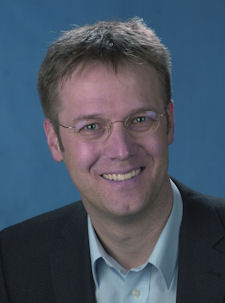October 1, 2012
By Detlef Schneider
 The single-platform concept has proved to be both convenient and effective all across the technology landscape, from smartphones that combine dozens of functions on a single device, to converged media that employ a single platform to allow viewing and seamless shifting of a broadcast on TV set-top boxes and other screens. For engineers, Altair has developed an approach that translates single-platform efficiency to the world of multiphysics (MP) analysis, or Smart Multiphysics simulation.
The single-platform concept has proved to be both convenient and effective all across the technology landscape, from smartphones that combine dozens of functions on a single device, to converged media that employ a single platform to allow viewing and seamless shifting of a broadcast on TV set-top boxes and other screens. For engineers, Altair has developed an approach that translates single-platform efficiency to the world of multiphysics (MP) analysis, or Smart Multiphysics simulation.
Obtaining Quality Results
Mathematically coupled MP solutions solve all the relevant equations in a single matrix, producing a single solution; putting all equations in one matrix and coupling them can mean compromising in many areas. To obtain high performance and quality results from MP simulation, each discipline involved needs to deliver high performance and quality on its own. Moreover, useful MP analysis only needs to exchange the data that is relevant to the actual engineering problem that must be solved.Our efforts at Altair have focused on obtaining quality results with scalable solutions on single physics aspects, while simultaneously ensuring the relevant data to solve the MP problem is seamlessly exchanged during the simulation run. To achieve this, we have the choice of applying strong or weakly coupled interaction or mapping data from one discipline to another (such as using manufacturing simulation results as inputs for structural analysis). Additionally, relying on a coupling strategy instead of integrating in one matrix allows the engineer to implement third-party tools during the process, so an open architecture has always been a key part of Altair’s strategy. Mathematically, a principal benefit of a single, monolithic code is its stability in solving highly coupled problems. This code, however, presents an inherent disadvantage in terms of size, as well as in managing an optimum solution for each of the physics. As a result, the method becomes impractical for large industry problems. Weakly coupled interaction may seem less stable in theory, but in practice we have developed technologies that furnish the stability of strongly coupled code without its drawbacks. In addition, this method’s ability to foster close collaboration among the computational fluid dynamics (CFD), structural and multi-body dynamics (MBD) developers “allowing them to have access to one another’s source code “has brought a measurable advantage to our solutions.Adding Efficiency
Software that is developed with MP in mind can make MP analysis a much more efficient process. For instance, AcuSolve, Altair’s CFD solution, is based on a finite element analysis (FEA) approach that fully preserves all the physical quantities, resulting in highly accurate results. How can the engineer determine when various levels of deeper MP are required? The right approach depends highly on the physics, which needs to be understood by the engineer. Once the appropriate technology is determined, typically the approach is captured in a workflow that can be exercised for other parts or by other people later on. The popularity of simulation technology continues to expand to new industries, and the availability of a single MP platform has become a key to unlocking solutions faster and more effectively “Smart Multiphysics, as we call it.Detlef Schneider began his career with Altair in 1997, after earning his degree in mechanical engineering at the University of Karlsruhe in Germany. In 2011, he joined Altair’s solver development unit in Irvine, CA, where he is senior vice president of solver products. Send e-mail about this article to [email protected].
More Info
Altair Altair ProductDesignSubscribe to our FREE magazine, FREE email newsletters or both!
About the Author
DE’s editors contribute news and new product announcements to Digital Engineering.
Press releases may be sent to them via [email protected].






